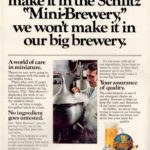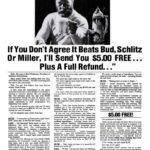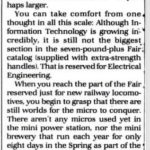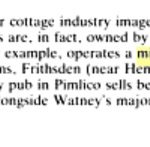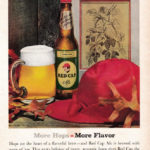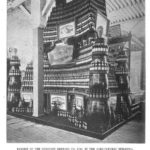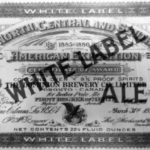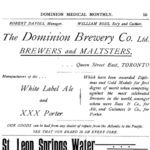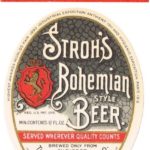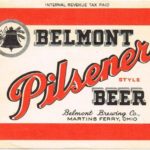 This is a difficult review to write. Even if it is only part two so therefore half a review. I don’t like to come across as all fawning… but I have a hard time finding anything other to write other than I think this is the best book about beer I have ever read. See what I mean? How dull is that? Think of Jesus in Paradise Lost. That dull. How can I illustrate this problem in such a way that is actually helpful to you, that bit of the reading public who stops by here from time to time? Let’s see.
This is a difficult review to write. Even if it is only part two so therefore half a review. I don’t like to come across as all fawning… but I have a hard time finding anything other to write other than I think this is the best book about beer I have ever read. See what I mean? How dull is that? Think of Jesus in Paradise Lost. That dull. How can I illustrate this problem in such a way that is actually helpful to you, that bit of the reading public who stops by here from time to time? Let’s see.
First, voice. One of the most interesting things about this book is how at quite specific points – but only at quite specific points – the writers breach what in TV is called the fourth wall. In sitcoms and crime dramas, we all assume, unconsciously sitting in our rec rooms on our sofas, that we are a camera, in a room with the actors and that the view of the lens is the view of the person viewing at home but somehow also in the room. Or when we read a book we forget we are interacting with an author and get lost in the suspension of the disbelief that one hope a good book offers as we are brought along by the storyteller’s pace. As is fully the case with this book – except when the authors interject themselves into the commentary about either the subject matter or the process of writing at certain points. It is deftly managed. Interspersed amongst long passages of excellently research and absorbingly described history. The authors are not there in view until they are and only when it is helpful.*
Second, structure. One of the most appealing things about this book is now it is not derivative. Beer books too often take the structure of other beer books** and maybe event a large part of its content and replicates it with a supposed update in terms of geography or the passage of, say, 18 months since the publication of a book roughly on the same topic. How many intro style manuals, food and beer pairing texts or geographical guides have come out? How many more will? Many.*** But structured histories leading through an important period? Few. THEN, add into the fact that it leads up to and creates the theoretical foundation for understanding many of the drinking establishments you have ever visited – more likely the case in the UK but not at all dislocated from the modern North American experience given how this micro brewing era began in the late 70s and early 80s in large part as an homage to UK brewing traditions. This gets a bit shocking as you realize you are reading whole chapters organized around disassembling elements of social patterns you just accepted were there. Consider just the chapter on gastropubs. It’s good enough on its own to be something you might read in that magazine that accompanies the Sunday edition of The New York Times. It also explains the milk paint in certain pubs and craft beer bars, where all the out of pattern plates and dishes came from and why a pile of salad is next to your shepherd’s pie – or more likely not shepherd’s pie but something a bit nicer. I actually looked up when I was done the chapter and thought to myself “what a good chapter” which is about as high a level of praise as I give out, chapterwise.****
Third, detailed research. Using primary sources contemporary to events! Footnotes. We get so numbed by fictive influencers, promoting pundits and the otherwise compromised that original research comes as a surprise. But there it is. Especially heartening is the presence of original transcriptions or newspaper interview of people who are – wait for it – still alive. Which means the authors have consciously made the determination that records contemporary with an occurrence are to be preferred to the recollection of the occurrence many years later. They got themselves into public libraries and perhaps even private business records. This is something which the entire history of craft beer in North America does not seem to have come to grips with yet. While oral history projects are certainly valuable, have we an effort out there to archive original records related to US craft in the 1980s? At the moment I am more confident that we could create a documented understanding of the state of American brewing in the 1880s. Not so now with the 20th century English pub.
Fourth, envy. This book is extremely appealing in its simple presentation of a well researched topic pushed along by a compelling narrative. Having co-written books myself, I was even thinking of how I might allocate bits to being more Boak than Bailey but gave up almost immediately. I have to be honest with myself. I have hacked away at this writing stuff for years. In relation to just beer about 26.6% of my life. I like to think what I have written is useful and entertainingly stated***** but, holy moly, is this stuff both strong and subtly put. As I recall, there is no more than two pages on how US black servicemen were received in English pubs during WW2 but it is so well placed and quietly left that you can’t help but contemplate the implications. Conversely, the massive and loud noise that was imposed on the UK market by the creation and expansion of that which is J.D. Wetherspoons is presented in great detail but without any bluster. Another well controlled, satisfying chapter.
So, there you have it. I have little more to add. A very solid bit of work. I told you it was good. And it is. Get it.
*There. That’s not too fawning. I think I am off on the right track. This book is not just a patched together bunch of blog posts. It’s a book.
**They themselves first nicked from wine.
***Yes, we know that it is all publishers want but really.
****Fine, yes… fawning. Fine. Still true.
*****Especially this stuff about beer and brewing from the 1600s which I am not sure you are all appreciating as much as you should.







